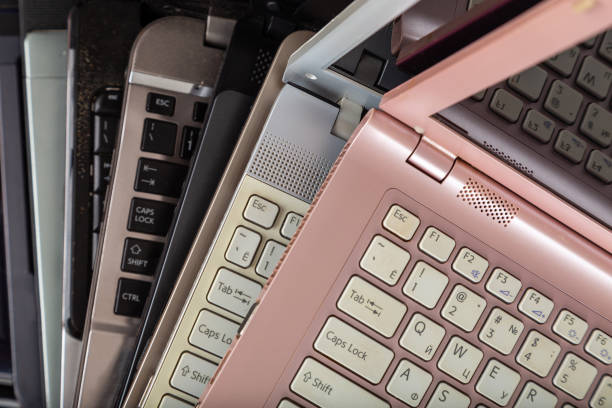Glass protectors are an essential accessory for modern gadgets, serving as a critical shield for smartphones, tablets, and laptops. With the increasing reliance on touchscreen technology, the vulnerability of screens has also risen. Glass protectors not only provide physical protection but also enhance the longevity and usability of devices. They are a small yet powerful investment that can save you from costly repairs and replacement hassles.
Understanding Glass Protectors
Glass protectors are thin, transparent layers designed to safeguard screens from damage. Made from materials like tempered glass or PET films, these protectors act as a barrier against scratches, cracks, and smudges. Their significance has increased with the advent of edge-to-edge displays, which, while visually stunning, are more prone to impact damage. Beyond physical protection, glass protectors often enhance the tactile experience, maintaining the smoothness and sensitivity of the original screen.
The Evolution of Glass Protectors
The concept of screen protection emerged alongside the rise of touchscreen devices. Early protectors were simple plastic films, offering basic scratch resistance but little else. Over time, advancements in material science introduced tempered glass, a robust alternative capable of withstanding greater impacts. Today, glass protectors have evolved further to include features such as blue light filtering, privacy shielding, and antimicrobial coatings. This evolution reflects the growing demand for comprehensive screen protection solutions tailored to user needs.
Types of Glass Protectors
Tempered Glass Protectors
Tempered glass is heat-treated for enhanced strength, making it the most popular choice for screen protection. It offers superior clarity, touch sensitivity, and resistance to impact and scratches. Its durability makes it a go-to option for high-end devices.
Plastic Film Protectors
Made from PET or TPU materials, these protectors are lightweight and flexible. They are ideal for basic scratch prevention but lack the durability and premium feel of tempered glass. However, their affordability makes them accessible to a wide range of users.
Privacy Glass Protectors
Privacy protectors feature a special coating that restricts viewing angles, ensuring that screen content is visible only to the user. This makes them ideal for safeguarding sensitive information in public spaces, such as during travel or in crowded offices.
Matte Finish Protectors
Matte protectors reduce glare and fingerprints, making screens easier to view in bright environments. They are favored by users who prioritize readability and anti-smudge properties over a glossy appearance.
Blue Light Filtering Protectors
These protectors filter out harmful blue light emitted by screens, reducing eye strain and promoting better sleep patterns for users who spend long hours on their devices. They are particularly beneficial for professionals, students, and gamers.
Benefits of Glass Protectors
Enhanced Durability
Glass protectors absorb impact and prevent damage from accidental drops, safeguarding the delicate screens underneath. They act as a sacrificial layer that takes the brunt of the impact.
Improved Screen Clarity
High-quality protectors maintain the original display clarity and brightness, ensuring an optimal viewing experience. They are designed to be as transparent as the screen itself, preserving the vividness of colors.
Reduced Fingerprints and Smudges
Oleophobic coatings repel oils and dirt, keeping screens cleaner for longer. This feature is particularly important for devices frequently used in outdoor or professional settings.
Privacy and Security
Privacy protectors keep confidential information safe by limiting the visibility of the screen to onlookers. This is especially useful for business professionals who work on sensitive projects in shared spaces.
Eye Health Benefits
Blue light filtering protectors reduce digital eye strain, making them particularly beneficial for professionals and gamers who spend extended hours in front of screens. They provide a healthier viewing experience without compromising screen quality.
The Manufacturing Process
The production of glass protectors involves multiple stages that ensure quality and durability:
Material Selection
High-quality tempered glass or polymer films are chosen based on the intended application and device compatibility. The material’s clarity and strength are critical factors in determining its effectiveness.
Tempering Process
Glass is heated to high temperatures and then rapidly cooled to enhance its strength. This process makes it up to five times stronger than untreated glass, ensuring that it can withstand significant impact.
Coating Application
Protective layers such as oleophobic or anti-glare coatings are applied to improve functionality. These coatings add features like water resistance, anti-smudge properties, and reduced glare.
Cutting and Shaping
Advanced laser technology ensures precise cutting to fit specific devices, including curved screens. This ensures that protectors align perfectly with the screen’s dimensions and features like cameras and sensors.
Quality Testing
Each protector undergoes rigorous testing for durability, clarity, and touch sensitivity before being packaged and distributed. This ensures that only high-quality products reach the market.
Choosing the Right Glass Protector
When selecting a glass protector, consider the following factors:
Compatibility
Ensure that the protector is designed for your device model to avoid fitment issues. A well-fitted protector not only enhances protection but also maintains the device’s aesthetics.
Material Quality
Look for protectors with a hardness rating of 9H for maximum scratch resistance and durability. This rating ensures the protector can withstand scratches from objects like keys and coins.
Features
Choose protectors with additional features such as privacy shielding, blue light filtering, or antimicrobial properties. These features add value and enhance the overall user experience.
Installation Kit
Opt for protectors that come with an easy installation kit to prevent air bubbles and misalignment. A seamless installation ensures that the protector functions effectively and looks professional.
Customer Reviews
Check user reviews and ratings to gauge the protector’s real-world performance. Customer feedback often highlights pros and cons that may not be immediately apparent.
Innovations in Glass Protectors
The industry is constantly evolving, introducing cutting-edge technologies to enhance functionality:
Self-Healing Protectors
These protectors use advanced polymers that can repair minor scratches over time, maintaining their pristine appearance. This feature prolongs the protector’s lifespan and usability.
Flexible Glass
Combining the strength of tempered glass with the flexibility of plastic, these protectors are ideal for curved screens. They offer a perfect balance of durability and adaptability.
Multi-Layered Protectors
Some protectors feature multiple layers for added impact resistance and enhanced functionality, such as anti-glare or privacy coatings. This innovation provides a comprehensive solution for various user needs.
Smart Features
Future protectors may include embedded sensors or nanotechnology to integrate with smart devices for enhanced usability. Such advancements could revolutionize the way we interact with our screens.
Best Practices for Installation and Maintenance
Proper installation and maintenance are crucial for maximizing the effectiveness of glass protectors:
Installation Tips
- Clean the screen thoroughly to remove dust and oils.
- Use alignment tools or guides to ensure precise placement.
- Smooth out air bubbles with an applicator or credit card to ensure a seamless fit.
Maintenance Tips
- Avoid using abrasive cleaning agents that can damage the protector.
- Replace the protector if it shows signs of wear or significant damage, as a compromised protector cannot offer full protection.
- Store spare protectors in a cool, dry place to preserve their adhesive properties for future use.
Environmental Impact and Sustainability
As the demand for glass protectors grows, manufacturers are adopting eco-friendly practices to minimize environmental impact:
Recyclable Materials
Using recyclable glass and polymers reduces waste and promotes sustainability. These materials can be repurposed to create new products, lowering the carbon footprint.
Minimal Packaging
Eco-conscious brands are minimizing packaging to lower their environmental footprint. Compact and recyclable packaging is becoming the industry standard.
Longer Lifespans
Durable protectors reduce the frequency of replacements, decreasing overall waste. High-quality products that last longer are not only economical but also environmentally friendly.
Challenges and Limitations
Despite their benefits, glass protectors have certain limitations:
Breakability
Tempered glass protectors can still crack under extreme pressure or impact. While they protect the screen underneath, they are not entirely indestructible.
Compatibility Issues
Some protectors may not fit well with thick cases or curved screens, leading to reduced usability or aesthetic appeal.
Cost
Premium protectors with advanced features can be expensive for budget-conscious users. However, they often provide better value over time.
Reduced Sensitivity
Low-quality protectors may interfere with touch sensitivity, affecting the user experience. It’s essential to choose a protector that maintains the screen’s responsiveness.
The Future of Glass Protectors
The future of glass protectors is bright, with innovations aimed at enhancing their functionality and user experience. Nanotechnology, smart coatings, and AI integration are some of the advancements expected to revolutionize the industry. These innovations promise to make glass protectors more versatile, durable, and environmentally friendly. With these advancements, users can look forward to a new era of screen protection that goes beyond the basics.
Conclusion
Glass protectors are an essential investment for anyone looking to protect their devices. They offer a cost-effective solution to prevent damage, enhance usability, and maintain the longevity of screens. By understanding the types, benefits, and innovations in glass protectors, users can make informed choices that align with their needs and preferences. As technology continues to advance, glass protectors will undoubtedly play a pivotal role in safeguarding our digital lives for years to come.




